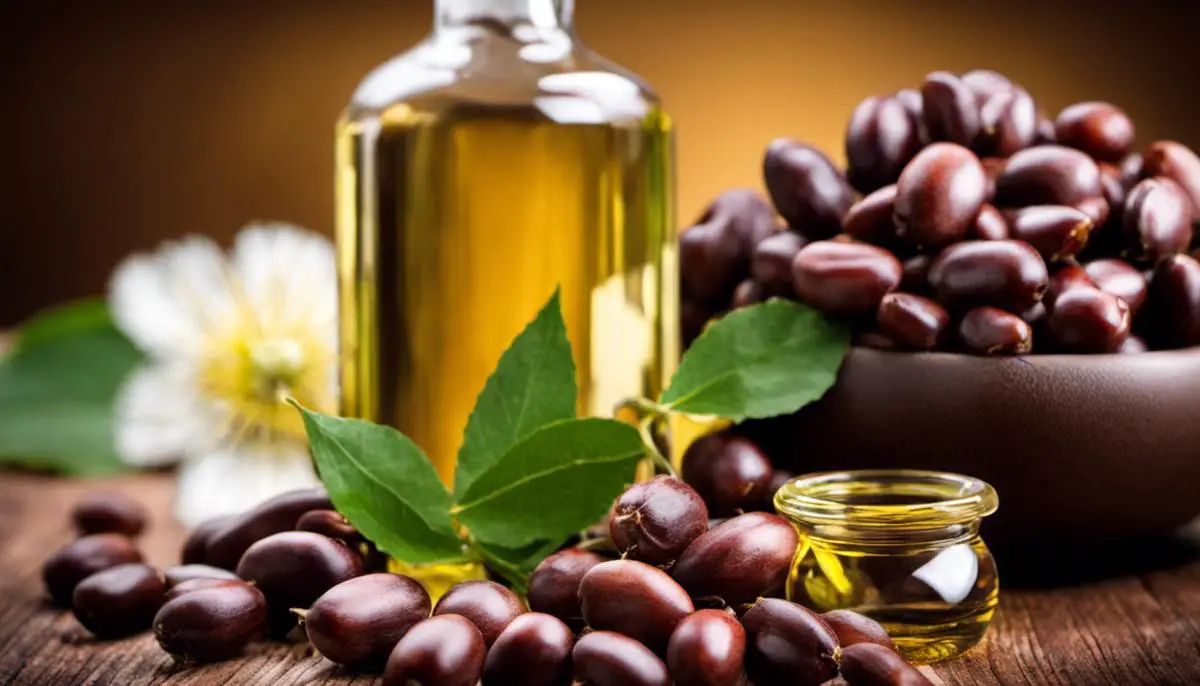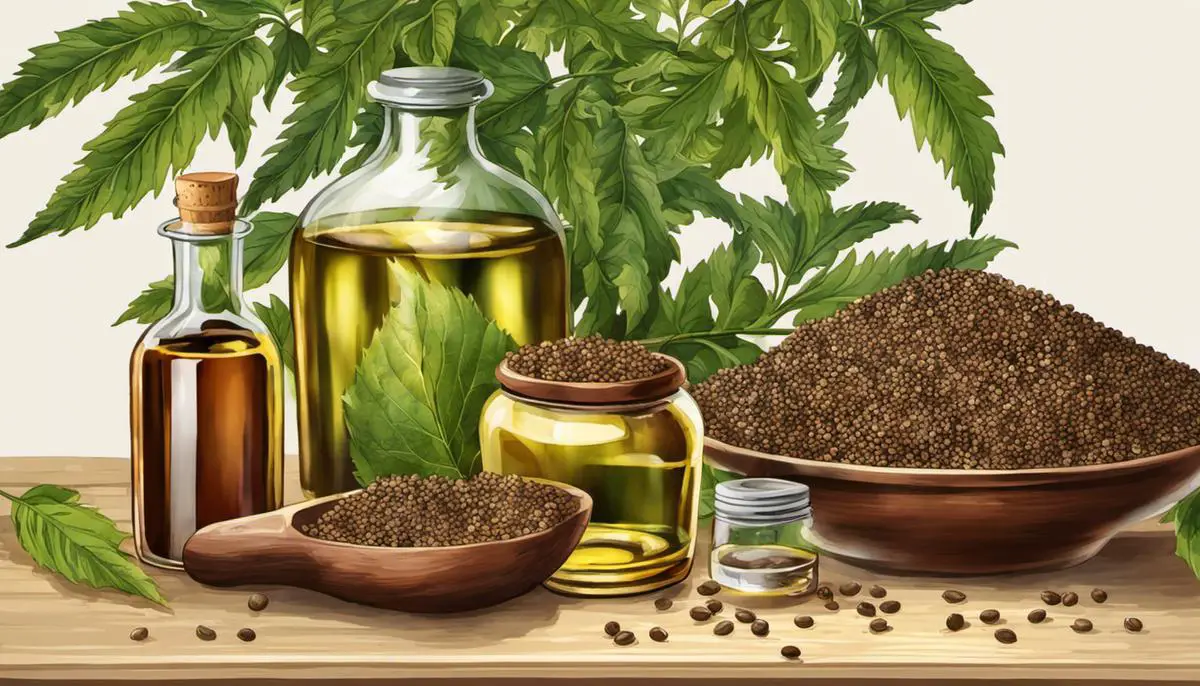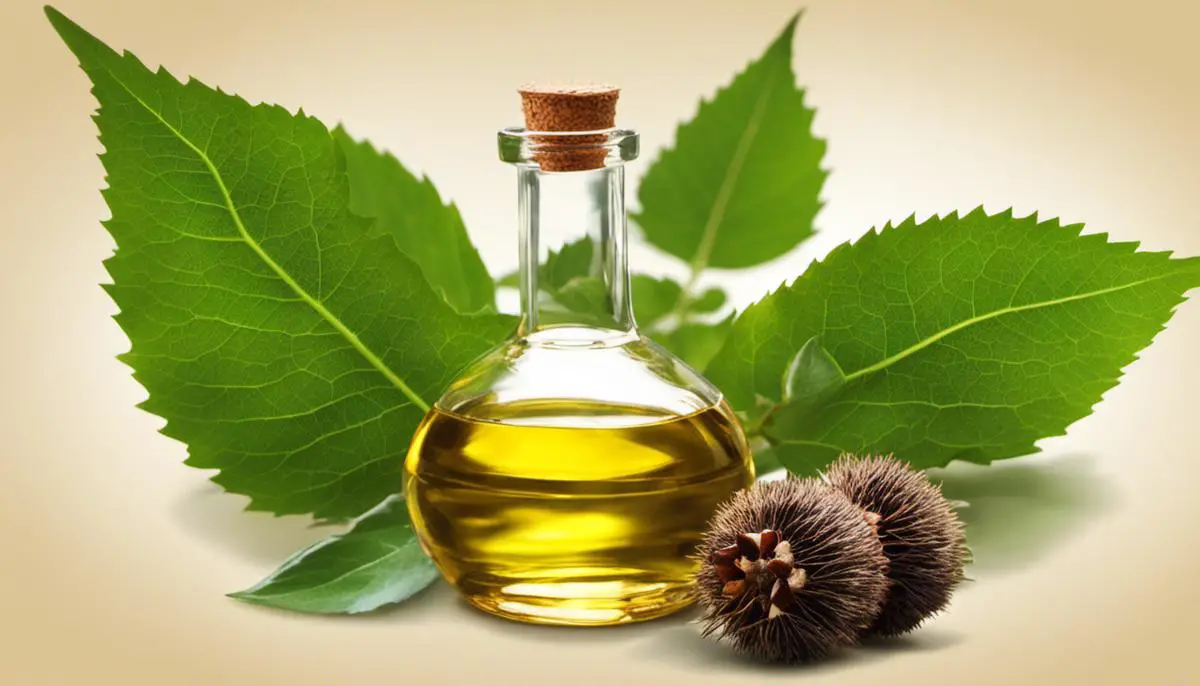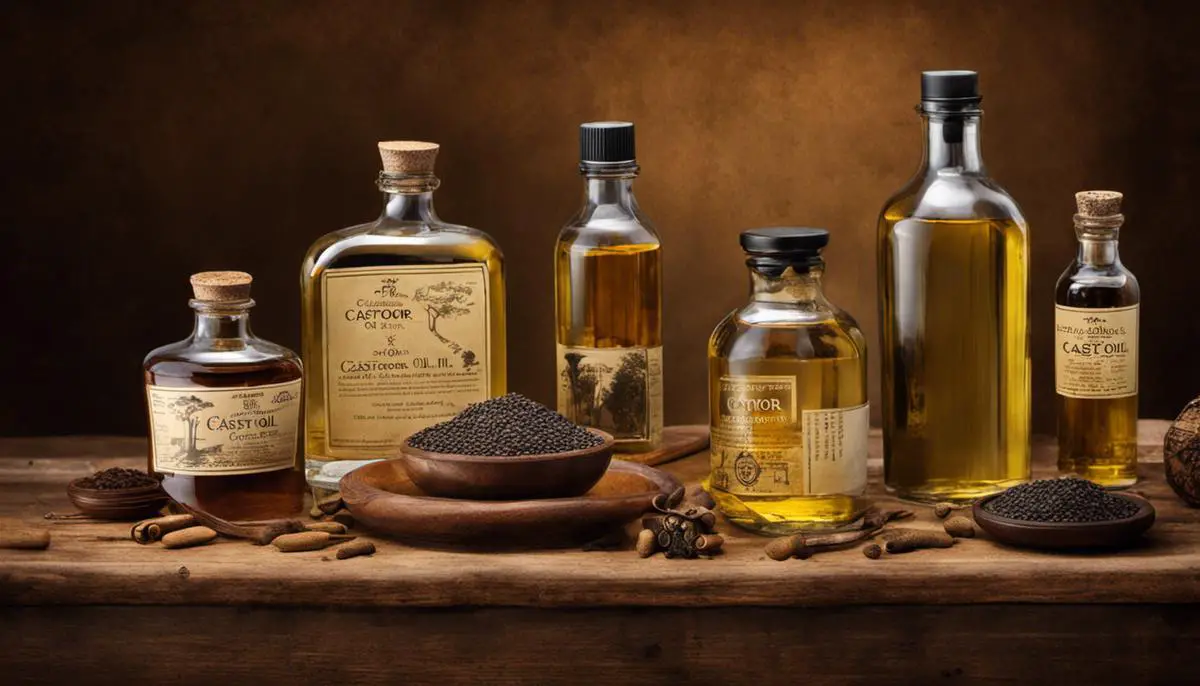Castor oil, a potent, natural remedy cherished for centuries, boasts an impressive range of healing benefits. This treasure of nature, often underestimated, has a long and illustrious history in traditional healing practices across the world. Whether you’ve come across it in an old family recipe, heard about it from a friend, or are discovering it for the first time, the diverse uses and fascinating science behind this oil are worth exploring. From its roots to your medicine cabinet, this journey explores the origin, chemical composition, and practical applications of castor oil, demystifying its powers and unearthing its many gifts to human health.
Origin and History of Castor Oil
Origins of Castor Oil
Castor oil is extracted from the seeds of the Ricinus communis plant, commonly known as the castor oil plant. The plant is native to the Mediterranean region, Eastern Africa, and India. The name ‘castor oil’ derives from its former medicinal use as a replacement for castor juice, which was used in early Phytotherapy, or herbal medicine.
The castor oil plant has been recognized for its powerful medicinal properties throughout history. Ancient Egyptians used the oil for its healing benefits even as far back as 4000 B.C., particularly valuing it for its purgative effects. The grease was also used in lamps and local cuisine.
In ancient Greece, the castor oil plant was known as “Kiki,” and it was an important part of their pharmacopeia. Roman medicine also made use of castor oil, where it was given the name “Palma Christi” meaning “Hand of Christ”. This name is still commonly used today for the plant.
Castor Oil in Traditional Healing Practices
Traditional African medicine made extensive use of castor oil. Healers primarily used it to treat skin disorders, gastrointestinal discomfort, and inflammation. They also used the oil to induce labor in pregnant women.
Ayurvedic medicine – a traditional Indian healing practice – also venerated castor oil’s healing abilities. The oil was considered to be a potent remedy for arthritis, digestive problems, skin disorders, and bacterial infections due to its natural anti-inflammatory and antimicrobial attributes.
In Chinese medicine, castor oil was cherished for its positive effects on the body’s circulatory and metabolic systems. It was believed to aid in the flow and balance of “Qi,” or life force, in the human body.
Production and Processing of Castor Oil
The process of extracting castor oil begins with the harvest of the castor beans. These beans, which are actually seeds, are then cleaned and cooked to prepare for oil extraction.
The cooking process involves heating the seeds to a high temperature to help expedite the extraction process. Once heated, the beans are pressed to extract the oil. Following the pressing process, the oil is allowed to settle and then filtered to remove any remaining solids.
Some producers use a cold-pressed method, which means the oil is extracted without the use of heat. This method typically retains more of the beneficial properties of the oil, resulting in a higher-quality product. The cold-pressed oil is considered pure and unrefined, containing all the essential nutrients.
Understanding the Healing Benefits of Castor Oil
Within the realm of modern medicine, the therapeutic properties of castor oil have gained significant recognition. The oil, known for its anti-inflammatory, antimicrobial, lymphatic stimulation, and analgesic properties, is highly regarded for its ability to accelerate wound healing, boost immune function, and offer relief from pain and various skin conditions.
Castor oil’s profound healing benefits can be attributed largely to its richness in Ricinoleic acid, a potent anti-inflammatory agent. This makes it a reliable choice for mitigating chronic inflammatory conditions like arthritis and rheumatism. Additionally, castor oil’s lymphatic stimulation properties position it as an effective solution for diseases related to circulation. Its antimicrobial characteristics aid in combating and shielding against infections.
When it comes to skincare, castor oil has etched its importance as a prominent ingredient due to its exceptional hydrating capabilities. In virtue of its high fatty acids concentration, it is frequently harnessed for promoting hair growth, countering stress, and serving as a natural moisturizer.
Notwithstanding its sundry advantages, carefulness needs to be practiced when using castor oil. Generally safe for topical use, it can, however, occasionally induce allergic reactions, warranting a patch test before application. Moreover, oral consumption of castor oil should only be undertaken with professional guidance, acknowledging its strong purgative effects.

Chemical Composition of Castor Oil
Inspecting the Chemical Composition of Castor Oil
Castor oil, a vegetable oil, is derived from the beans of the Ricinus communis plant, colloquially recognized as the castor oil plant. Fundamentally, it consists of a monounsaturated fatty acid called ricinoleic acid, which imparts most of its therapeutic properties. Ricinoleic acid forms approximately 90 percent of castor oil’s constitution, with minor ratios of linoleic and oleic acids. Other trivial elements that make up castor oil include stearic acid, palmitic acid, and dihydroxystearic acid. Alongside these fatty acids, castor oil embodies esters and salts which further enhance its healing potential.
Healing Benefits of Ricinoleic Acid
Ricinoleic acid, the main component of castor oil, has been found to have anti-inflammatory and analgesic properties. This means it can help alleviate pain and reduce swelling when applied topically. This makes castor oil a popular choice for treating arthritis and other inflammation-related conditions.
Ricinoleic acid also possesses antimicrobial properties, which makes it capable of inhibiting the growth of bacteria and fungi. This is particularly useful in treating skin infections and promoting wound healing. Furthermore, studies have found that ricinoleic acid can stimulate smooth muscle contractions, which is why castor oil is sometimes used as a powerful laxative.
Benefits of Other Components in Castor Oil
In addition to ricinoleic acid, castor oil also has other important fatty acids, including linoleic and oleic acids. Linoleic acid is an essential fatty acid that plays a critical role in maintaining the health of the skin. It helps fortify the skin barrier and prevents moisture loss, which can potentially help in treating dry skin conditions.
Oleic acid, on the other hand, is a heart-healthy monounsaturated fat that is often found in other beneficial oils, such as olive oil. It has anti-inflammatory properties and may support wound healing.
Understanding the Potential Risks of Castor Oil
Like most things, castor oil can yield both beneficial and potentially harmful effects, depending on how it’s used. While taken orally to act as a laxative, it can quite commonly result in feelings of discomfort such as stomach cramping, nausea, and even diarrhea. Repeated or excessive use can also potentially cause an imbalance of electrolytes in the body.
For usage on the skin or topically, castor oil is generally regarded as safe for most people. That said, there’s still a chance of possible allergic reactions, which may surface as rashes or hives on the skin. As a precautionary measure, conducting a patch test is always encouraged before integrating it into any daily beauty or health routines.
Lastly, if used unregulated or excessively, castor oil can theoretically lead to a build-up of fluids in the body, cause a drop in blood pressure, or even bring about heart palpitations—particularly among individuals already having heart conditions. As with any new supplement or drastic changes in diet, it is of utmost importance to consult with a healthcare provider before commencement.

Healing Benefits and Uses of Castor Oil
The Role of Castor Oil in Skin Care
A more common and popular use of castor oil revolves around skin care. This is largely due to its high concentration of ricinoleic acid—a special type of fatty acid. This specific acid has been attributed to many health benefits, including reducing inflammation. A study published in the Journal of Ethnopharmacology back in 2000 suggested that ricinoleic acid could potentially be used to alleviate symptoms of skin conditions, such as dermatitis.
Other studies have also indicated that the fatty acid present in castor oil can help inhibit the growth of various bacteria, yeasts, and molds—always a good sign as part of a remedy. As such, castor oil has often been considered a possible natural solution for treating acne and skin infections caused by fungus.
Hair Growth and Scalp Health Benefits of Castor Oil
It’s not just the skin that can benefit from castor oil, but also the hair and scalp. Castor oil’s antimicrobial properties can help prevent and alleviate dandruff, and its high content of ricinoleic acid and omega-6 fatty acids can help increase blood circulation to the scalp, promoting hair growth. A review in the Journal of Cosmetic Science found that application of castor oil could help retain moisture in hair, enhancing its softness and flexibility.
Anti-Inflammatory Properties of Castor Oil
In addition to skin and hair care, castor oil also has anti-inflammatory properties that may help reduce discomfort and inflammation. Ricinoleic acid, the main fatty acid found in castor oil, has demonstrated strong anti-inflammatory properties in several scientific studies. A 2002 study in Acta Dermato-Venereologica reported that topical application of castor oil significantly reduced inflammation in a human skin irritation model.
Castor Oil for Wound Healing and Pain Relief
The healing benefits of castor oil also extend to wound healing. The oil can provide a protective barrier between the wound and air, reducing the risk of infection while allowing the wound to heal more efficiently. Research published in the Journal of Wound, Ostomy and Continence Nursing cited castor oil as an effective treatment for chronic wounds. Additionally, a 2009 study in the Journal of Pain found that direct application of castor oil pack can significantly reduce pain among patients with osteoarthritis.
Castor Oil as a Potential Laxative
Castor oil, renown for its therapeutic efficacy, serves primarily as a potent laxative due to ricinoleic acid. Research conducted by the National Institutes of Health reveals that ricinoleic acid targets the muscular composition within the intestinal walls, stimulating a robust laxative response. Therefore, castor oil can potentially ameliorate constipation. Notwithstanding, it is crucial to use it sparingly to evade adverse outcomes such as abdominal discomfort, nausea, and an imbalance in electrolytes.

Practical Tips and Precautions
Uncovering the Myriad Healing Advantages of Castor Oil
Beyond its well-known laxative properties, Castor oil— a golden-hued fluid derived from the castor seeds— boasts an extensive spectrum of healing advantages courtesy of its high content of ricinoleic acid. This monounsaturated fatty acid is famed for its antimicrobial, moisturizing, and anti-inflammatory attributes. Historically, castor oil has been utilized for diverse purposes, encompassing the stimulation of hair growth, easing arthritis-related pain, and the enhancement of skin wellness.
Promoting Hair Growth with Castor Oil
Castor oil is known to facilitate hair growth due to the ricinoleic acid which improves scalp circulation and balances pH levels. Regular application of castor oil can help stimulate hair follicles and potentially reduce hair loss. While evidence on the extent of its effectiveness is mixed, many users report noticeable improvements over time.
Relieving Pain and Inflammation
Castor oil’s anti-inflammatory properties make it excellent for relieving pain and reducing inflammation, especially for conditions such as arthritis. Applying the oil topically on the joints could potentially alleviate pain and inflammation.
Improving Skin Health
Because of its moisturizing properties, castor oil is often used to hydrate skin and improve its overall health. It may help reduce dryness and the appearance of wrinkles, as well as promote wound healing.
Practical Tips for Use
While it’s generally safe for most people to use, it’s important to perform a patch test first to determine if you’re sensitive or allergic to castor oil. To do a patch test, simply apply a small amount of the oil on your wrist or forearm and wait for 24 hours. If there are no negative reactions, you can proceed with applying it as recommended.
Castor oil can be directly applied to the skin or mixed with other carrier oils like coconut or jojoba oil to dilute its concentration. For hair growth, apply the oil to the scalp and gently massage it in. For skincare, apply the oil to the face or body after a shower when the skin is still damp for maximum absorption.
Precautions
Keep in mind that while castor oil has a wide range of potential benefits, it is not a substitute for medical treatment. Always consult your healthcare provider before starting a new remedy or treatment. Avoid using castor oil on broken skin or open wounds, and never ingest it without medical supervision, as it can cause severe digestive issues.
Choosing the Right Brand
When selecting a castor oil, it’s recommended to choose a brand that offers a 100% pure, organic, and cold-pressed product. This ensures that the oil retains all its natural properties without addition of any synthetic ingredients. Brands such as Heritage Store, Sky Organics, and Jamaican Black Castor Oil are typically recommended for their quality.
In conclusion
Castor oil is a versatile natural remedy with a range of potential healing benefits, but always remember to use it responsibly and consult your healthcare provider if unsure.

Photo by tamanna_rumee on Unsplash
Armed with an understanding of the science behind castor oil and the wealth of its healing properties, you are well-equipped to harness its power. Yet, as with any health regimen, it’s important to approach use with care. Whether it’s for skin care, hair growth, or reducing inflammation, the justice you do to your body starts with informed and responsible use. And while castor oil offers a myriad of benefits, remember, its potency necessitates careful application. Use this knowledge to empower your health journey, ensuring that every drop of this ancient elixir is used to its fullest potential.
